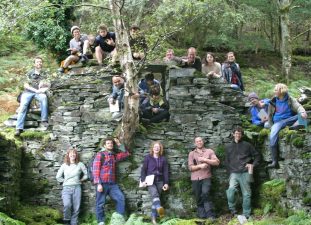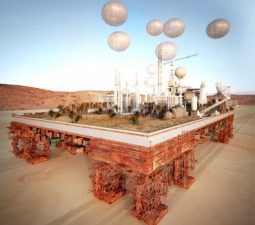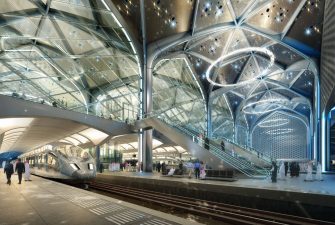 South African architects chose mud as the main building material for an $8.36 million Islamic Research Institute project in Timbuktu.
South African architects chose mud as the main building material for an $8.36 million Islamic Research Institute project in Timbuktu.
Using the name Timbuktu in a phrase denotes a sense of something that is far, far away. And it is. Located near the Niger River Delta in Mali, Timbuktu is the gateway to the vast Sahara desert. But it is also, perhaps surprisingly, the seat of a long tradition of Islamic scholarship. (See the 5 Spectacular Eco-Mosques of the World)
Initially built in the 1970s, the Ahmed Baba Institute of Higher Islamic Studies and Research needed an uplift. With an $8.36 million budget to work with for the 50,000 square foot Institute, Cape-Town based dhk Architects chose mud as their primary building material for the project’s first phase.
Now the principal of his own firm called twothink Architecture and working on the second building phase, lead architect Andre Spies purchased mud bricks directly from street craftsmen. Since mud is vulnerable to rains, he commissioned a local mason who fashions a combination of mud and concrete to create hydrophobic bricks for the building’s facade.
The Ahmed Baba Institute is tasked with protecting sacred documents that devoted scholars have protected for decades. Following the colonial French departure from the region, many of these documents were buried underground while the country fell into disrepair.
Added to the main sustainable building material, which pays allegiance to the local vernacular, are ornate, carved screens that also permit plenty of light. And finally, given their historical importance, it was necessary for Spies to outfit the archival/conservation laboratory with less-permeable concrete blocks.
By Gulf standards, this earth-based architecture is quaint and archaic, but Malian author Albakaye Ousmane Kounta finds it too modern for Timbuktu’s taste. Even so, we love this building. It may not be draped with pearls, or touching the clouds, but it is beautiful, functional, and won’t create a massive dent in the earth from whence it came.
More on Earth Architecture and Eco-Islam:
Mud Structures in the Muslim World
5 Spectacular Eco-Mosques of the World
Hassan Fathy is the Middle East’s Father of Sustainable Architecture
images via Iwan Baan





